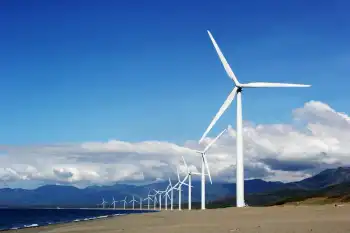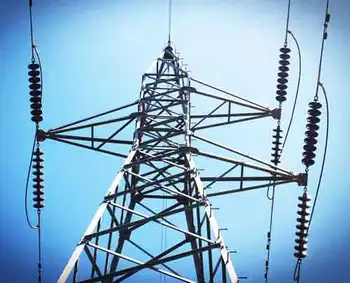Largest Power Co-Generation Plant in Canada Starts Operation
By Lynn Hutchings EPCOR Manager, Media Relations
Electrical Testing & Commissioning of Power Systems
Our customized live online or in‑person group training can be delivered to your staff at your location.

- Live Online
- 12 hours Instructor-led
- Group Training Available
When fully operational, the $380 million plant, operated by ATCO Power, will increase the amount of electricity generated in Alberta by more than four per cent. Major partners with a 40 per cent share in the 416-megawatt plant are ATCO Power and EPCOR, with NOVA Chemicals owning the final 20 per cent.
"As we fully power up, more electricity will be available to meet the growing needs of Albertans and NOVA Chemicals demands at Joffre," said ATCO Power President Gary Bauer. "This facility is one of the most cost-efficient, technologically-advanced and environmentally progressive in the world."
On average NOVA Chemicals is expected to use 128 megawatts of electricity with the remaining 288 megawatts available for sale by ATCO Power and EPCOR to meet growing provincial needs. The plant will supply the electrical and steam/heat needs for the entire Joffre petrochemical site, where NOVA Chemicals owns and operates two ethylene plants and a polyethylene plant.
"One of the environmental benefits of co-generation is its ability to maximize the use of energy generated on-site," said Don Lowry, President and CEO of EPCOR. "Nothing goes to waste as the heat and steam byproducts of generation will be used on-site and the additional power can be used to meet power needs in the province.
The innovative co-generation plant consists of two Siemens-Westinghouse 501F combustion turbine generators, each with a heat recovery boiler supplying steam to a single steam turbine generator. It uses natural gas to simultaneously produce steam through the recovery of exhaust heat and electrical energy. A major milestone occurred February 27 with the firing of the first combustion turbine. Both turbines went on line together and synchronized to the provincial grid on March 14, 2000. The turbines are being operated on an intermittent basis during the testing and tuning stages with the steam turbine expected to be fully operational within one month.
Dan Boivin, NOVA ChemicalsÂ’ President of Olefins/Polyolefins said: "The efficient generation of low-cost energy will contribute to our goal of being a very low cost producer of both ethylene and polyethylene."
The ATCO Group of Companies is engaged in electric power generation, transmission and distribution; natural gas gathering, processing, transmission, storage and distribution; workforce housing; industrial noise abatement and technical services and facilities management. More information about ATCO can be found on our website, http://www.ATCO.com
EPCOR is an Alberta-based company that supplies essential elements for living -- water, power, natural gas and technology services - to customers in Alberta, Ontario and British Columbia. More information about EPCOR can be found on our website, htpp://www.epcor-group.com
NOVA Chemicals is a focused commodity chemicals company producing ethylene/polyethylene and styrenics at 18 locations in Canada, the United States, France, the Netherlands and the United Kingdom. Visit NOVA Chemicals on the Internet at http://www.novachem.com
For more information contact: Grant Lake ATCO Power Vice President, Commercial Tel: (403) 209-6905











